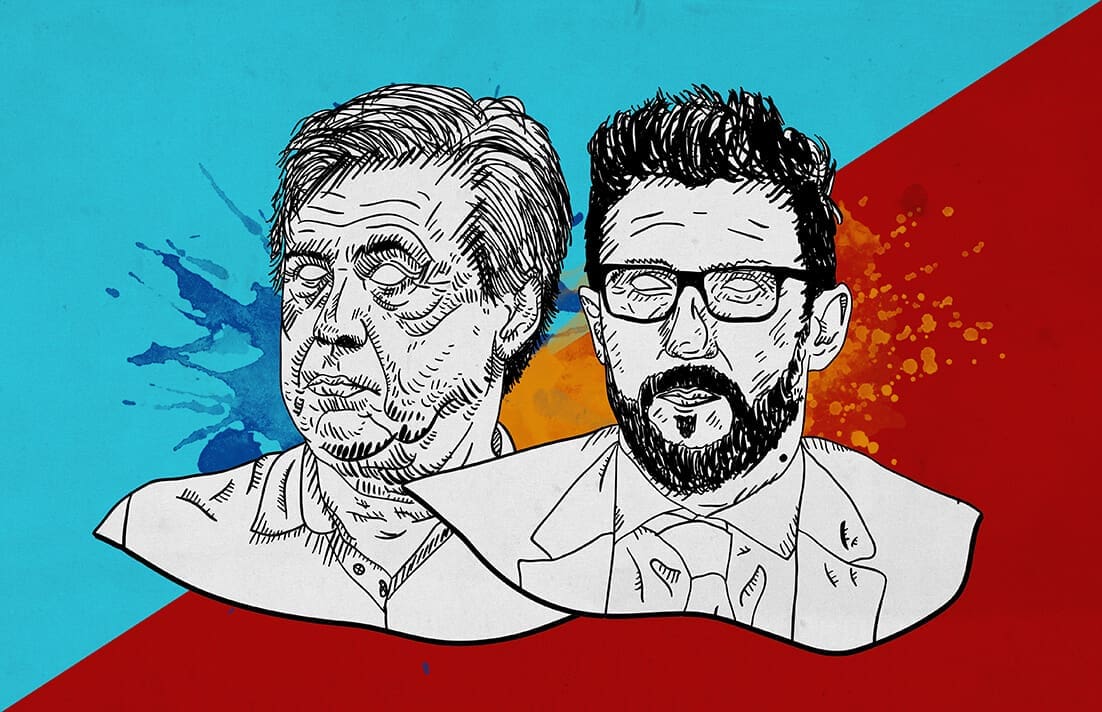This post originally featured on our dedicated Serie A analysis website, serieaanalysis.com
Roma’s start to the season has been very complicated as the Giallorossi sit in 8th place in the Serie A table, but the game against Napoli was a chance to show that they’re still one of the “Big Three” in Serie A. Ancelotti’s side, on the other hand, on the back of an impressive performance against PSG have had an excellent start to the season, considering the teams they’ve faced in the league and their Champions League campaign thus far.
An interesting tie awaited, as Roma had a point to prove and Napoli sought a win to stay four points behind the league leaders Juventus.
Roma: Olsen; Santon, Manolas, Jesus, Kolarov; De Rossi, N’Zonzi; Under, Pellegrini, El Shaarawy, Dzeko.
Napoli: Ospina; Hysaj, Albiol, Koulibaly, Rui; Callejon, Allan, Hamsik, Fabian; Insigne, Milik.
Roma’s plan
As Roma took the kick-off, Napoli started the game in their usual 4-4-2 mid-press shape, and would push up to press only when Roma played a backpass to the goalkeeper or a lateral pass to the full-back, where the winger would step out to reduce Roma’s wide player’s time on the ball and force a backpass. Although Napoli’s press didn’t force any turnovers, it was very effective in compelling Roma back and preventing them from accessing the forwards. As a result, albeit Roma were able to bypass Napoli’s first line of press through the numerical superiority (3v2) gained in build-up through De Rossi’s dropping movements, they struggled to create anything significant.

Napoli’s man-oriented press against Roma’s 2-1 build-up shape
Only in rare situations were Roma able to access Pellegrini or one of the wingers in the half-spaces, when Napoli’s second line stepped out to press and the last line failed to adjust its height accordingly (generally due to Dzeko and a winger pinning the centre-backs deep), creating space between the lines.
Uncharacteristically, off the ball Roma didn’t apply their usual aggressive high man-oriented press, as they retreated in a rather passive 4-4-1-1 that transitioned into a 4-3-2-1 on the ball side, since on the right side Under stepped out diagonally to cut the passing lane towards the full-back and press (even though with little aggression) the man on the ball. However, on the left side, the strategy varied, with El Shaarawy staying on the second line to be able to access Hysaj, instead of pressing the ball-carrier, and in order not to isolate Kolarov in a 2v1 had Allan or Albiol been able to reach the Albanian full-back or Callejon.
This approach ceded Napoli’s midfielders time on the ball up to the midfield line, which gave them time to find passing solutions such as long-balls into Milik’s runs. The central axis looked to prevent passes into the centre, especially the double pivot, which remained tight and focused on denying access to Fabian between the lines, who, from the left winger position out of possession, would cut inside the left half-space to form an asymmetrical shape on the ball.

Roma’s 4-4-2 mid/deep-block out of possession
Roma’s focus on covering the centre was meant to direct Napoli to the flanks, from where their only solution would be to cross (21 crosses in the first half, of which only seven were successful, and 48 in the entire match).
Following De Rossi’s injury in the 43rd minute, with Cristante substituting the captain, Roma switched to a 4-5-1 to have even better coverage of the centre.
Napoli’s asymmetry gives them control
As mentioned earlier, Napoli’s asymmetrical shape was a key part of their performance against Roma and it has been characteristic of Ancelotti’s spell at the club. Napoli mainly build through the left side and perform some positional rotations to gain situational advantages and force the opponent to react.
Against Roma, when the CBs were in possession, Hamsik dropped in the defensive half-space, almost acting as a left half-back, from where he carried the ball up the pitch to dictate the play.
As a reaction to Hamsik’s dropping movement, in order not to overload deep areas unnecessarily by keeping too many players on the first line, and to occupy the pitch optimally, Mario Rui pushed high, occupying the width, whilst Fabian cut into the half-space to provide an option between the lines; Allan, instead, moved tighter towards Hamsik, acting as a loan pivot and as rest-defence. On the right side, to draw El Shaarawy to the centre and free Callejon on the far side in a 1v1 against Kolarov, Hysaj acted as a false full-back.

Napoli’s asymmetrical shape against Roma’s 4-5-1: Hysaj acts as a false full-back, Hamsik drops into the defensive half-space, Fabian Ruiz cuts inside to free the flank for Mario Rui whilst Callejon provides width on the right.
Through these rotations, Napoli were able to combine on the left-side and often free a man in depth, behind Roma’s defensive line. Through their approach, Napoli created two big chances and kept 55% possession in the first half, which is nothing compared to the level of dominance they achieved in the second half, reaching 70% possession and allowing Roma only one shot on target.
Conclusion
The second half saw Roma slowly sit back even further in their 4-5-1 and being unable to counter with success due to their deep and flat staggering which made them vulnerable to Napoli’s counter-pressing. De Rossi’s injury was a big blow for Roma as he had not only been key in cutting passing lanes towards Fabian Ruiz, but he had also retained possession supremely by engaging in third man combinations and allowing his side to bypass Napoli’s press.
This game showed Napoli’s quality, who were able to force Roma back and prevent them from creating any sort of danger, as confirmed by the expected goals (2.03 vs 0.78). Di Francesco’s side was quite organised at the back, covering passing lanes well and denying Napoli access to the space between the lines, but their inability to counter successfully or regain control of the ball inevitably sealed their fate, as Mertens found a late goal following one of Napoli’s many left side combinations and subsequent crosses to the far side (typical of the Sarri era).
Napoli will be disappointed in the final 1-1 result which doesn’t paint the real picture of their domination throughout the match, but Ancelotti will be satisfied with his team’s performance and will certainly look to build on it. Despite his many doubters at the start of the season, the three-time Champions League winner is proving that he’s all but a finished manager and still has tricks up his sleeves.
On the other hand, Roma’s point in Naples is extremely valuable, but unless Di Francesco finds a way out of this identity crisis, it will be hard to remain confident about the Giallorossi’s chances of success this season.






Comments